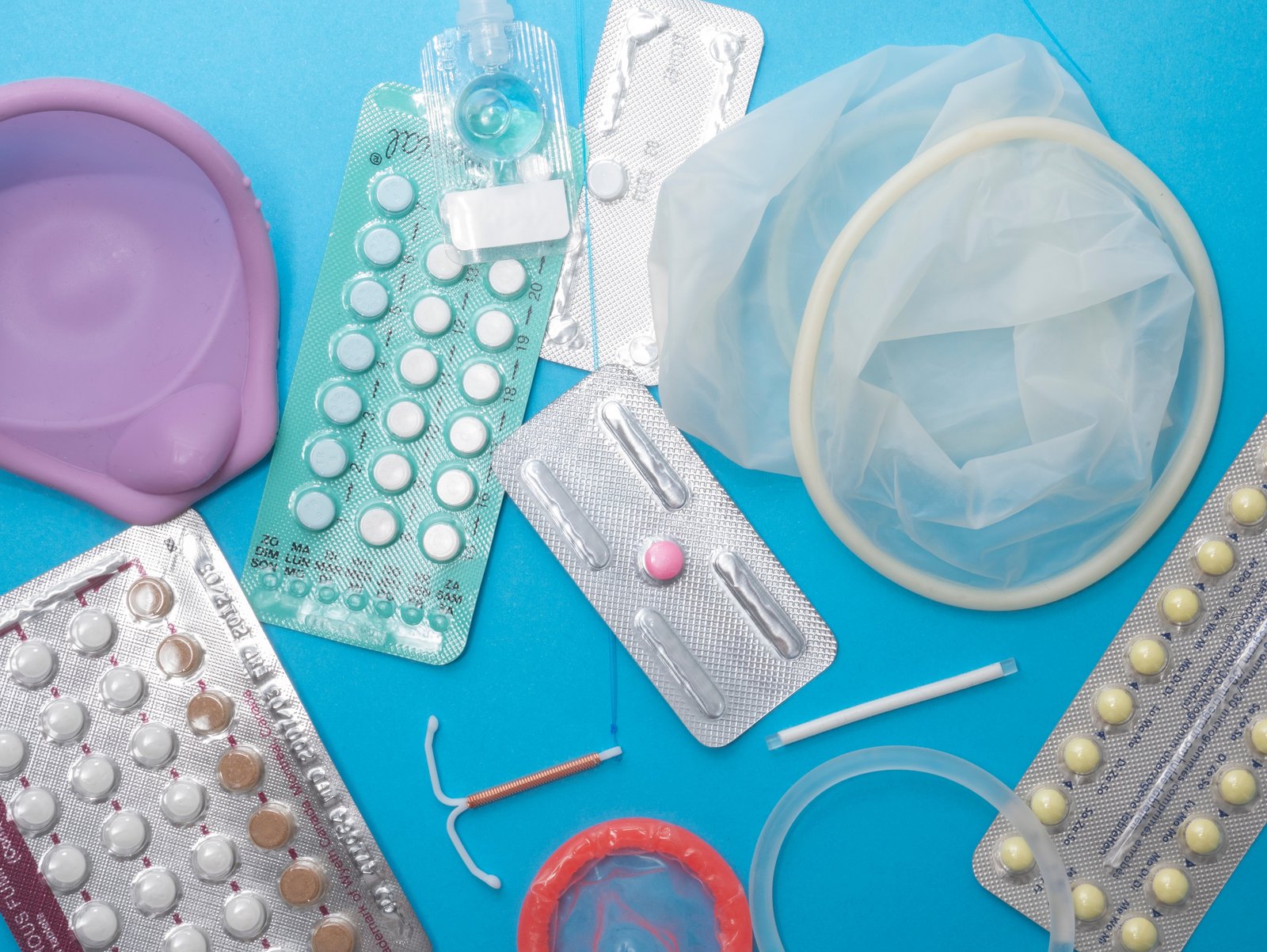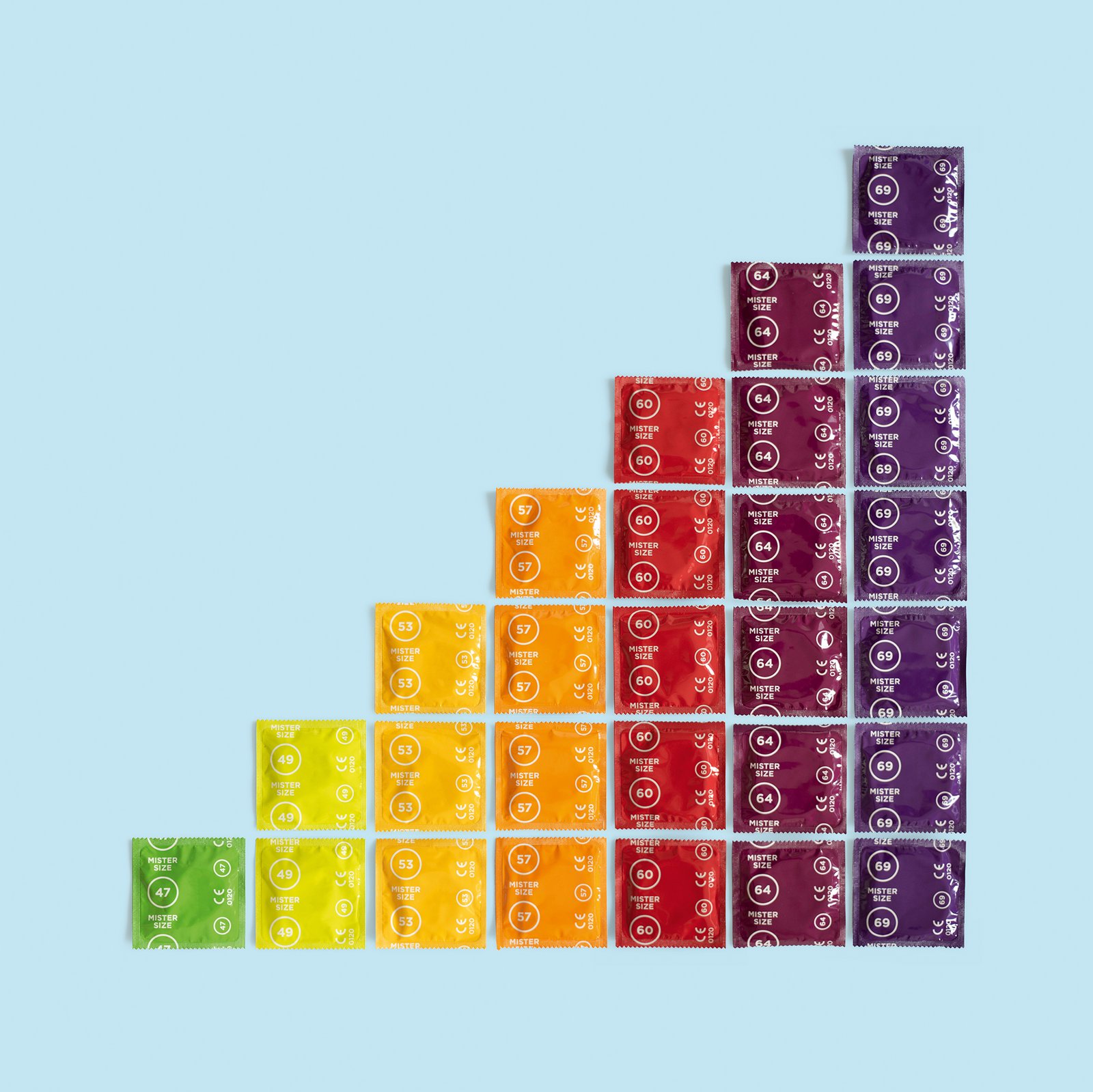
Hormone-free contraception for women, the best methods
In this article you will learn which hormone-free contraceptives and contraceptive methods are available for you as a woman. You will also get an insight into how the methods work, how much they cost and how safe they are.
To indicate safety, we use the Pearl Index. This indicates how many women have become pregnant if they have used the contraceptive method regularly for 1 year. A Pearl index of 15 means that 15 out of 100 women got pregnant in one year using this method.
What are the contraceptive methods for women?
Unlike contraceptive methods for men, there is a whole range of contraceptive methods available to women. Overall, they fall into 4 different categories:
Hormonal contraceptive methods: In these contraceptive methods, the body's own estrogens and progestins are administered in various ways. These hormones trick the body into thinking you are pregnant, which prevents you from getting pregnant.
Chemical contraceptives: in short, chemical contraceptives such as contraceptive gels or creams kill sperm or make them unable to move. These spermicides should only be used in conjunction with other contraceptives because they are too unsafe on their own.
Mechanical methods of contraception: These include female condoms, cervical caps, or copper contraceptives. These contraceptives create a barrier that sperm cannot penetrate.
Natural contraceptives: This category of hormone-free contraceptive methods includes the temperature method or the calendar method. Basically, the goal of these methods is that you monitor your body to determine your fertile days.
Natural contraception
At the moment there are 5 different natural contraceptive methods that you can use to get hormone-free contraception. The nice thing is: used correctly and regularly, they can actually be very safe.
Additionally, many women report that these methods have greatly helped them to better understand and perceive their cycle and body.
For this point alone, it might be worth trying one or more methods.
It is important that you should not abstain from intercourse or use other contraceptive methods such as condoms only on the day of your ovulation. This is because sperm can survive in the uterus for up to 4 days. That means you should plan on at least 5 days of abstinence or protection.
Natural contraception with the calendar method
Contraception with the calendar method is one of the oldest methods of natural contraception. It was developed almost simultaneously by gynecologists Kyusaku Ogino and Hermann Knaus back in the 1920s, which is why the method is also known as the "Knaus-Ogino method".
All you need to use the calendar method is a cycle calendar or cycle diary.
The important thing is to observe and document your cycle for about 6 months before you start calculating. Is your cycle regular? Regularly deviant or irregular?
Basically, the method assumes a 28-day cycle, with ovulation after 14 days.
How exactly the calculation works, you can read here.
Costs: From about 6,- Euro for a cycle calendar, but it works with every calendar.
Pearl index: 9 out of 100
Cervix method instead of pill
With the cervix method, you have to palpate the cervix or os. This is because it changes during your menstrual cycle. Immediately after menstruation, the cervix feels firm and closed. It is also closer to the entrance of the vagina.
During the fertile days, the cervix is soft (like lips) and slightly open. In addition, it now lies further inside the body.
This method combines well with the following natural contraceptive methods.
Cost: Free of charge
Pearl index: 3 to 23 out of 100
Contraception by cervical mucus observation
The cervical mucus method or also called Billings method of contraception works similarly to the cervical method.
Cervical mucus changes throughout the cycle from lumpy and viscous after menstruation, to milky-cloudy just before ovulation. As you get closer to ovulation, your cervical mucus becomes more fluid and clear.
On the most fertile days, you can pull strings with the mucus between your fingers.
In order for you to use the cervical mucus method for contraception, you must test and document the amount, color, and consistency every day. If the amount of cervical mucus multiplies in a short time, you can expect to ovulate in 2 to 3 days.
Cost: Free of charge
Pearl index: 15 out of 100
Hormone-free contraception with the temperature method
In this method, you need to measure your body temperature after getting up, also called basal body temperature, with a thermometer.
After ovulation, your body temperature rises by a few tenths of a degree, where it remains until menstruation and then drops again.
Because your body temperature can also be affected by stress or illness, you should always combine it with other methods such as the Billings method.
Some fitness trackers already offer functions for continuous body temperature measurement. These include Fitbit or Oura, for example.
Costs: Depending on the product between 2,- and 399,- Euro
Pearl Index: 0.8 to 3 out of 100
Contraception with the symptothermal method
The symptothermal contraceptive method is the combination of the temperature method, the cervical mucus method and, if necessary, the cervical or calendar method.
By combining the different methods you can make a more reliable prediction of your fertile days.
Costs: 2,- to 399,- Euro, if necessary there are running costs for apps.
Pearl Index: 0.4 out of 100
Copper coil, copper chain or copper ball for long-term contraception
With copper contraceptives you have the great advantage that they are inserted once by the gynecologist and you can then use them for up to 5 years. Every 6 months you have to check if everything is still in place and that's it.
The copper damages the sperm and makes them unable to move. In addition, the cervix changes, which also makes it much more difficult or impossible for the sperm to penetrate.
The disadvantage of these hormone-free contraceptives is that they are extremely painful to insert and remove. In some cases, they can also cause more severe menstrual bleeding and discomfort.
Cost: About 120,- to 400,- Euro
Pearl index: 0.4 to 1 out of 100
Diaphragm or cervical cap for contraception without hormones
These two hormone-free contraceptive methods are among the technical contraceptives for women. They are silicone disks that also have a spring ring inside. The diaphragm or cervical cap can be used up to 2 hours before sexual intercourse to block sperm.
The contraceptives thus form a barrier in front of the cervix, which can be further strengthened by applying spermicides such as contraceptive gels or creams.
Cervical caps can even attach somewhat to the cervix, making them a tighter fit.
The disadvantages of these alternatives to the pill are that they must remain in the vagina for at least 8 hours after sex. They also need to be specially fitted by gynecologists. In addition, they can cause unwanted pregnancies if inserted incorrectly, and they do not protect against STDs either.
Cost: About 31 to 70 euros plus the contraceptive gels or creams of about 10 to 15 euros per tube.
Pearl index: 1 to 20 out of 100
Female condoms as an alternative to the pill
Female condoms, or "femidom," are similar to male condoms. To use it, you need to insert one end into the vagina and secure it. The 2nd end stays outside and covers the vulval lips. In this way, the penis remains covered by this skin made of latex, which catches all the sperm.
Another advantage of femidoms is that they also protect you from sexually transmitted diseases.
Unfortunately, there are also disadvantages. When using them, they can crackle, slip and they are not necessarily easy to use either.
Cost: From about 8.50 to 10.50 per pack.
Pearl index: 5 to 25 out of 100
Condoms for safe contraception
As an alternative to femidoms, there are of course condoms that are worn by the man.
Granted, they are not a contraceptive for you as a woman in that sense, but they are still a hormone-free alternative that is easy to use and get.
To have the most safety and fun with them, you (or your partner) need to make sure to use the right condom size.
You can read about how you or your partner can find the perfect condom size here.
Cost: From about 3.95 euros per pack
Pearl index: 2 to 12 out of 100
Sterilization - hormone-free, but final.
Sterilization is a hormone-free contraceptive method for women and men who no longer want children. Although it is often advertised that sterilization can be reversed, the chances of success are low and even if they are, the chances of successful pregnancies decrease.
In this method, your fallopian tubes are either blocked or cut. This prevents the eggs from traveling to the uterus, making fertilization impossible.
Costs: Approximately 600,- to 1.000,- Euro (covered by health insurance if there is a medical certificate that the sterilization is necessary)
Pearl index: 0.1 to 0.3 out of 100
How safe is Coitus Interruptus as a contraceptive?
Using coitus interruptus (also called pull-out method) as a contraceptive method is one of the most unsafe contraceptive methods.
Unwanted pregnancies can happen quite easily and it also does not protect against the transmission of STDs.
In principle, this method involves pulling the penis out of the vagina just before ejaculation. However, this requires a great deal of self-control and nevertheless semen can leak from the penis even before ejaculation.
The Pearl index of 4 to 18 pregnancies is only an approximate estimate and is likely to be even higher in reality.
Cost: Free of charge
Pearl index: 4 to 18 out of 100
Conclusion on hormone-free contraception for women
There are many different hormone-free birth control methods and contraceptives that you can use as a woman instead of the pill, hormone sticks, or hormone IUDs. To find the best method for you, we recommend that you talk to a gynecologist or try natural birth control methods for women.
Read our post on new and old birth control methods for men now if you're curious about what's out there for them.

